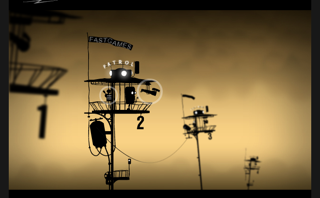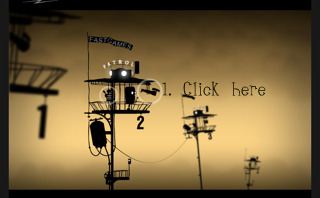The Instructions
Objectives
- You are to write instructions (a cheat code/walkthrough) for a computer game.
- You must write clearly so that anyone can follow the instructions.
- Choose one of the games shown below.
|
The Games
Web Resources
- You must have already played the game.
- Choose either Little Wheel or Samarost.
- [Little_Wheel]
- Samarost
|
The Hints
Key points
- Use Scene headers
- Break the instructions into single actions
- If you use abbreviations (RH, LH etc) make sure you explain what they mean
|
Example
Scene 1
- At the beginning when the robot comes back alive there are two circles click on the RH circle and look through the telescope
- Note which buttons are glowing on the machine that you can see through the telescope
- Click on the second (LH) circle and push the buttons until the same ones are glowing
- Click on the lever.
|
Key points
- Screen shots can be very helpful
- Use Alt + Prtsc buttons to take a screenshot on a PC
- Use shift + apple + 4 to take a screenshot of part of a screen on a MAC
- Use shift + apple + 3 to take a screenshot of the whole screen on a MAC
|
Example
Little Wheel

Samarost

|
Key points
- Use editing software to write instructions on the picture.
- Use a contrasting colour.
- You can use an online photo editor like Picnik or Fotoflexer
|
Example
Little Wheel

Samarost

|
The Presentation
Key points
- How are you going to present the cheat codes?
- Computer version
- Print version
- What are the benefits of each?
|
The End Result
Summary
|
When you have finished writing your cheat code check the list below to make sure you haven't missed any important details.
Criteria for writing instructions
- Purpose: The title shows which game you are writing the cheat code for.
- Equipment: All the equipment needed to play the game. (Is it OS (PC, Mac, Linux) or browser specific?)
- Language: Any abbreviations used have been explained.
- Skills: All the skills are listed that someone needs to play the game.
- Steps: All the things that have to be done are recorded and each step is written on a new line.
- Logical sequence: The steps are in the same order of how the game is played.
- Verbs: Each step begins with the action word that tells the reader what to do.
- Present tense: All instructions are written in the present tense.
- Illustrations: Instructions can have pictures. The pictures add understanding to the instructions. (In a cheat code you often see screenshots.)
|
The Reflection
Reflection
|
Once you've completed the instructions you need to get someone else to play the game following your instructions. Here are some questions for you to think about while they are playing (and remember you can't help them - they must follow your written instructions).
- Are the written instructions clear?
- Was the person able to follow them easily?
- Were there some skills I missed out?
- Did I write the steps in the correct order?
- Did the person have fun?
|
Note from the author
Background
This unit of work came out of a conversation with another teacher. I had introduced some logic games to my students (7-9 year olds). These games had no instructions - the point of the game being to figure out what to do by clicking on various objects within the game. Since we were doing a writing unit on instructional writing, she suggested I get the students to write the instructions on how to play the game.
This page is a modified version of the unit I've developed for the students.
- --dragonsinger57 22:01, 22 August 2009 (UTC)
Feedback
( : Wow this is so impressive Jo! I wish I was in your classroom. --MaryRobinson)
: Wow this is so impressive Jo! I wish I was in your classroom. --MaryRobinson)
( : Wonderful initiative. I fixed the external links because they had double brackets.--Nellie Deutsch 03:38, 27 August 2009 (UTC))
: Wonderful initiative. I fixed the external links because they had double brackets.--Nellie Deutsch 03:38, 27 August 2009 (UTC))
![]() : Wow this is so impressive Jo! I wish I was in your classroom. --MaryRobinson)
: Wow this is so impressive Jo! I wish I was in your classroom. --MaryRobinson)
![]() : Wonderful initiative. I fixed the external links because they had double brackets.--Nellie Deutsch 03:38, 27 August 2009 (UTC))
: Wonderful initiative. I fixed the external links because they had double brackets.--Nellie Deutsch 03:38, 27 August 2009 (UTC))



